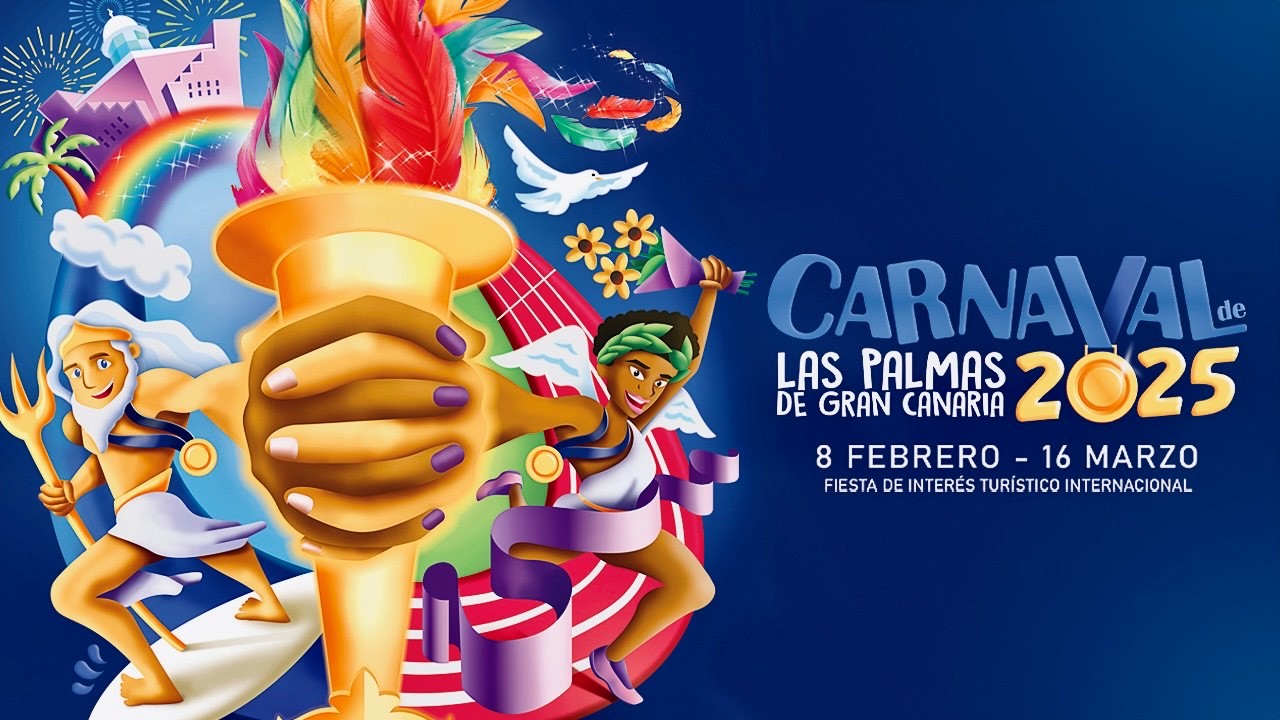
15th to 18th Centuries
Las Palmas de Gran Canaria Carnival is one of the oldest, most deeply rooted and unique festivals of the Canary Islands capital. For over five centuries the city has celebrated with masquerading, tomfoolery... and flesh. Its origins go back practically to the dawn of the city's history. The Gran Canaria capital, founded on June 24, 1478, soon became well known for its ability to bring together cultures, with the presence of settlers of various origins. In his Historia de Canarias (the 'History of the Canary Islands'), José de Viera y Clavijo, recounting the arrival of Field Marshal Íñigo de Brizuela in the islands in February 1635, reveals: “a great dinner was served that night, and three banquets on the days of Shrovetide...” In addition, by the 16th century, various documents of the time allude to the presence of Italians in the city and their fondness for masked balls.
19th Century
Carnival celebrations made their first significant leap forward in the mid 19th century, with the emergence of sociocultural institutions with the faculty to organise festivities for various occasions, complemented by the first parades of allegorical floats and carriages accompanied by masqueraders. This is the time of the Círculo Mercantil (the 'Merchants Circle'), the Gabinete Literario (the 'Literary Forum') and Club Las Palmas, all based in and around the city's historic centre, where the Pérez Galdós Theatre witnessed numerous scenes of dancing and carnival entertainment.
20th Century - The Winter Fiestas
And in the 20th century, the emergence of institutions like the Club Náutico (the 'Sailing Club') and Club Victoria added the city's docks and the La Isleta quarter to the carnival map. State repression prevented the development of an event that was disguised under the name Fiestas de Invierno, or 'Winter Fiestas', which locals kept alive in secrecy, at events almost always hosted by the most notable social and sports clubs. They organised dances and parties attended by local residents, who hid their costumes under sheets until they reached the venue.
20th Century- 1976: The revival of the street carnival
The modern carnival started taking on its current format from 1976 onwards. This was when parties on the street were revived. A few months after the death of Franco, an Isleta resident, Manolo García, called the civil governor of the province and obtained authorisation to bring the carnival back onto the city's streets, and a costume parade was held after 40 years of prohibition. La Isleta residents set up the first Patronato del Carnaval, or Carnival Trust, and took charge of organising the event in these early years.

The 1980s
In the 1980s, the carnival organisers had to become more professional and specialised. The Carnival was taking over the entire city and called for a bigger budget, more activities and municipal planning. This sowed the seeds for the agreement that was reached between the Carnival Trust and the Municipal Council. The mayor Juan Rodríguez Doreste, a true carnival-lover, played a pivotal role in this process, backing the creation of a Mixed Commission that would organise the events.
In 1986 another step was taken in the organisation of the Carnival with the creation of the Las Palmas Carnival Foundation, which included representatives from the city council, the political parties, the residents' associations, carnival groups and other social groups. Those were the years when a Venetian party used to be organised in Vegueta, which is still remembered today.
The 1990s
The 1990s started with some changes to the structure of the festival, and a limited company called Fiestas del Carnaval de Las Palmas was created. In 1995 the main events returned to Santa Catalina Park, establishing the park as the focal point of the carnival.
1998 marked a turning point in the recent history of the Las Palmas de Gran Canaria Carnival, as the year of the first Drag Queen Gala; the Gala surpassed all expectations and has since established itself as a flagship event and the calling card for these fiestas abroad.
The 21st Century - The outward expansion of the carnival
Over the last thirty years, the carnival has gone on to become the fiesta of greatest social and economic importance on the island of Gran Canaria, and one of its main tourist attractions. It is a celebration that has known how to adapt to the new demands for leisure and entertainment from a media-dominated society, while preserving all its traditional flavour.
In 2001 the company called Promoción de la Ciudad de Las Palmas de Gran Canaria, S.A. was set up to manage and organise the carnival celebrations.
Today, the carnival of the Gran Canaria capital has racked up a history peppered with worthy contributions from many well-loved popular celebrities like Juanito El Pionero or the unforgettable Charlot (a perennial masquerader dressed as the brilliant Charlie Chaplin). At the same time it has become a festival with the capacity to keep up with the times by incorporating new acts and events. So, to the tune of the anthem Invitación al Carnaval ('Invitation to the Carnival'), by Sindo Saavedra, the carnival celebrations are a true popular phenomenon, with the only goal being revelry in a carnival city.








